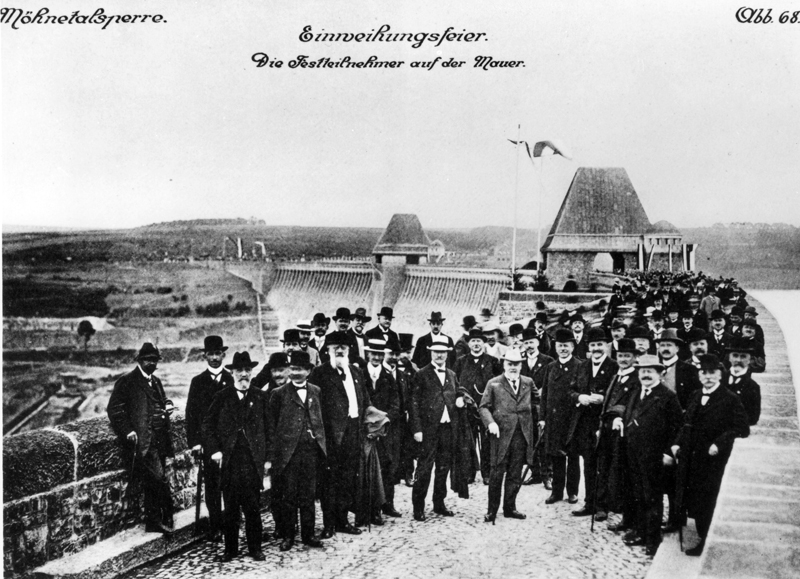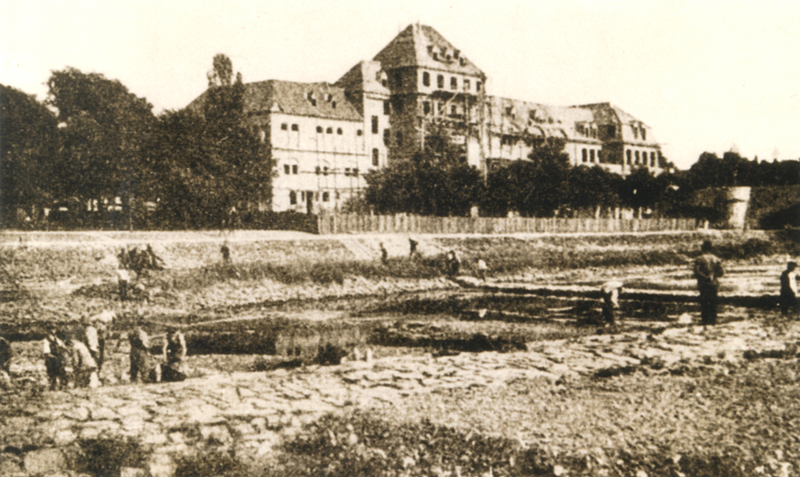How the Ruhrverband developed
From a sparsely populated agricultural area to the largest conurbation in Europe: There's hardly another region to which industrialisation has brought such radical change in such a short period of time as it did to the Ruhr region. New coal-mining and iron-processing technologies boosted the coal and steel industry in the mid-19th century. More and more coal mines, coking plants and steel works were being set up in the heart of the Rhenish-Westphalian industrial area and attracted more and more workers. The population exploded. Within only a few decades, villages and rural communities grew into large cities with several hundred thousand residents.
And all those coal mines and industrial plants, all the people surging into the Ruhr region needed water, more and more water. Soon, the old system of water supply from wells was far from covering the demand. The River Ruhr - even though a relatively small river judging from its length and runoff - was and still is today the only suitable main supplier of drinking and industrial water. This fact has over and over again led to water shortages. In the summer months, particularly the large cities of the lower Ruhr valley were left with hardly any water as the waterworks located upstream had already abstracted large quantities of water and mainly exported them into other river basins. Not least the power plant operators along the lower Ruhr were affected by this damaging abstraction as they were increasingly deprived of the "fuel" for their turbines.
Against this backdrop, the Ruhrtalsperrenverein (Ruhr reservoirs association) was founded in 1899 as voluntary alliance of waterworks and power plants under private law. Already five years after the association's foundation, four reservoirs with an overall storage capacity of 16 million cubic metres were put into operation for the regulation of low water during the dry season.
In the following years, however, dangerous supply shortages still occurred and eventually caused the whole system to collapse in 1911: Weeks of heat and drought coupled with the waterworks' high abstraction levels and the discharge of untreated domestic and industrial sewage into the river - still common practice those days - turned the Ruhr's lower reaches into a blackish-brown, oily sludge. Typhoid broke out in Mülheim, infecting 1,500 people, and eventually the water shortage even disrupted industrial production along the lower Ruhr.
This extreme situation led to a break-through: Based on a Prussian special law, the Ruhrverband was founded in 1913 as a public-law water association designed to operate sewage treatment plants to keep the Ruhr clean. The same law also awarded a public-law status to the hitherto privately organized Ruhrtalsperrenverein. The law stipulated that all users of the Ruhr become members of these associations, including all municipalities and districts that were entirely or in part located in the associations' area, businesses and industrial plants discharging large quantities of sewage as well as public water supply companies and power plant operators. It was a courageous and at this time highly forward-looking decision, allowing the Ruhrverband and the Ruhrtalsperrenverein to manage the Ruhr's entire river basin as an entity across administrative borders, independent of political concerns and individual business interests.
And even though smaller supply shortages during hot summers did occur until the completion of the Bigge Reservor in 1965 - the conflict about the usage and the quality of the river's water between the users of the upper and the lower Ruhr finally became a thing of the past. On July 1, 1990, the Ruhrtalsperrenverein and the Ruhrverband were merged into one water management association bearing the Ruhrverband's name. This association is responsible for the river basin management, including water quantity and water quality management.










